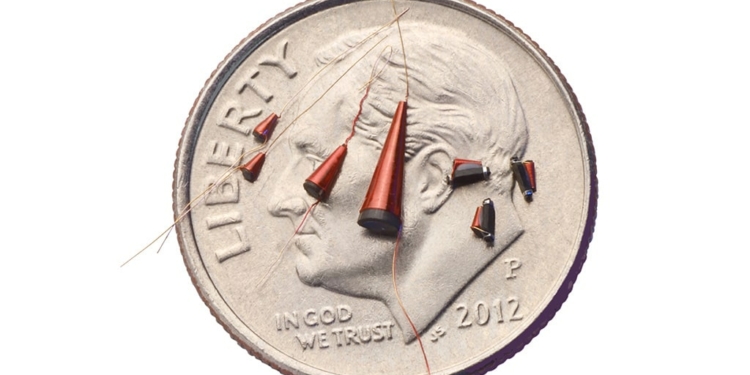Source: Gowanda news
Gowanda, NY (USA) – Gowanda Electronics announces new broadband conical inductors with up to 10 Amps of DC current handling – the highest level in the industry – and low insertion loss.
The four new series – C305FL, C550FL, C750FL and C1000FL – expand Gowanda’s conical offerings and will be featured at the 2019 Optical Networking and Communication Conference & Exhibition (OFC) being held in San Diego, California from March 5 to 7. Visit Gowanda Components Group booth #5417 for more information.
These flying lead series were developed to address market needs and industry trends calling for ever-increasing performance from broadband conical components. Gowanda’s new series will be utilized in communication applications for bias T’s (filter signals, remove noise), broadband chip manufacturing, communication platforms, high frequency, microwave circuitry, RF test set-ups, test & measurement, test gear, test instrumentation and transmission amplifiers.
The performance ranges provided by these four new wirewound conical series include inductance from 0.30 µH to 22 µH (TYP), Q from 30 to 66 (TYP), DCR ohms MAX from 0.02 to 0.265 and current rating mA DC from 1300 to 10500. Series-specific data ranges are provided in the table below. All four series have been outgassing tested per ASTM E595 and meet the TML requirement of 1.0% max. Operating temperature range is -55°C to +125°C for all series. Standard terminations and gold terminations are RoHS compliant; please contact factory for Pb terminations.

As with Gowanda’s previously introduced conicals, these new series offer excellent robust construction to assure predictable frequency response and repeatable RF performance. The unique broadband response of the coil is attributed to its precision winding, wire selection and coil configuration.
This expansion of Gowanda’s conical product line leverages the company’s proprietary production processes, extensive design experience, and custom capability expertise to deliver high performance, cost-effective, standard and custom broadband solutions to address the needs of the global electronic design community.






























